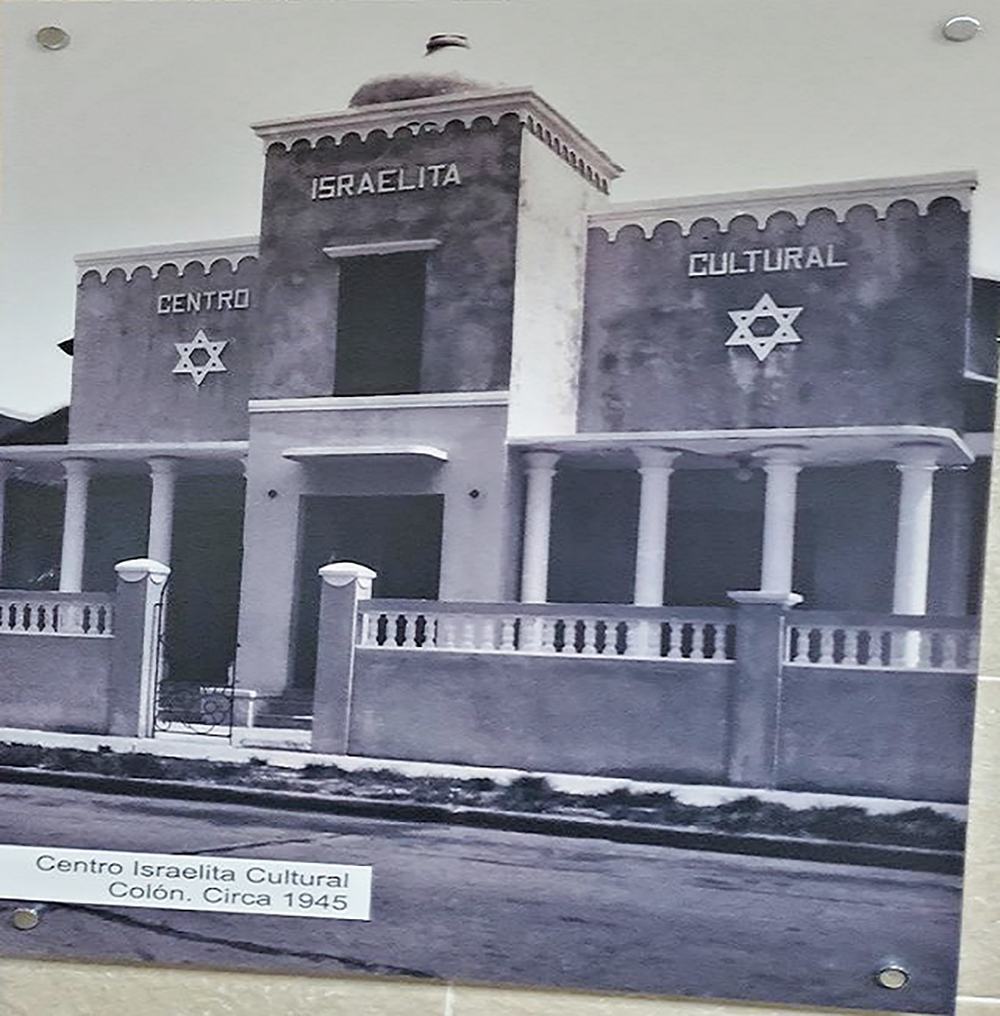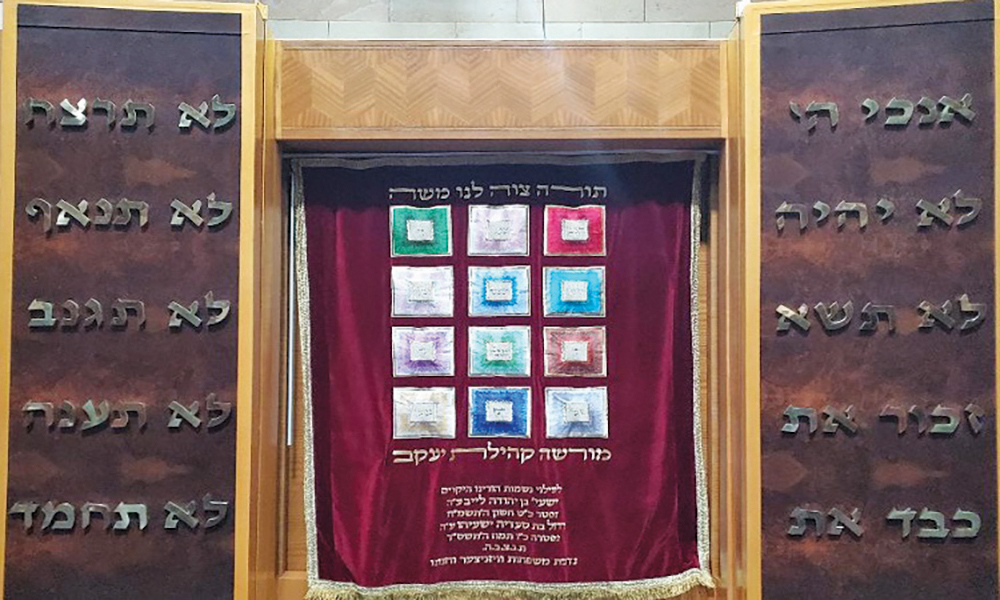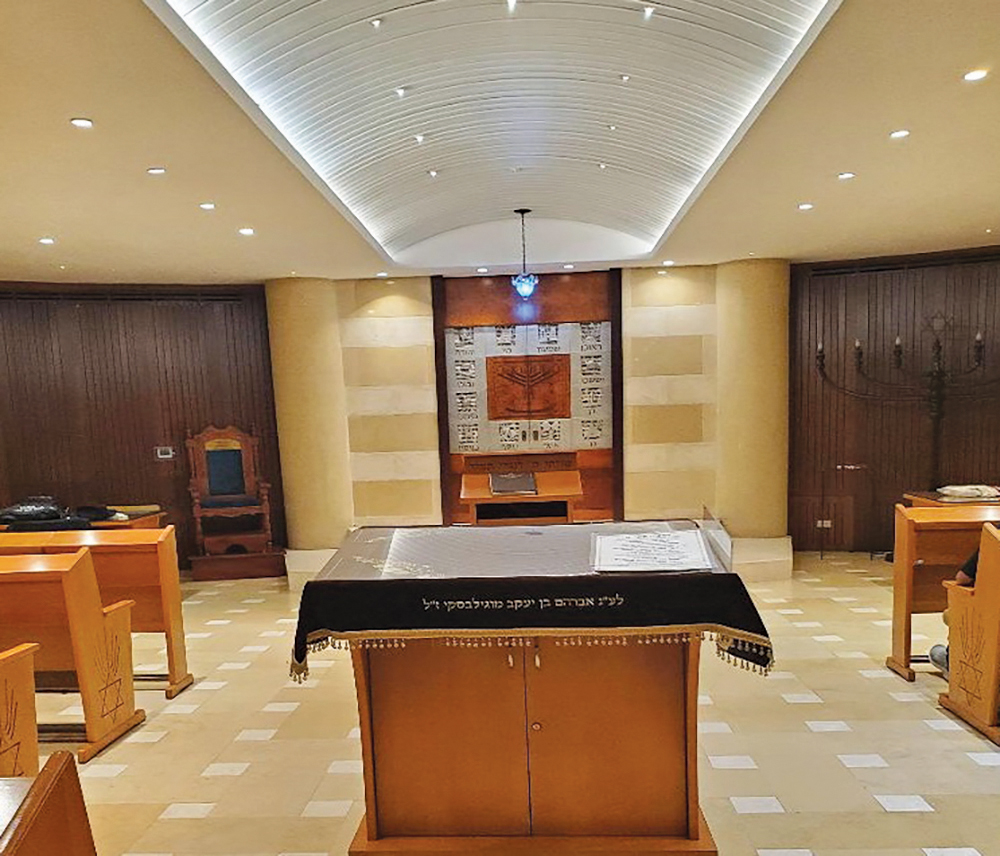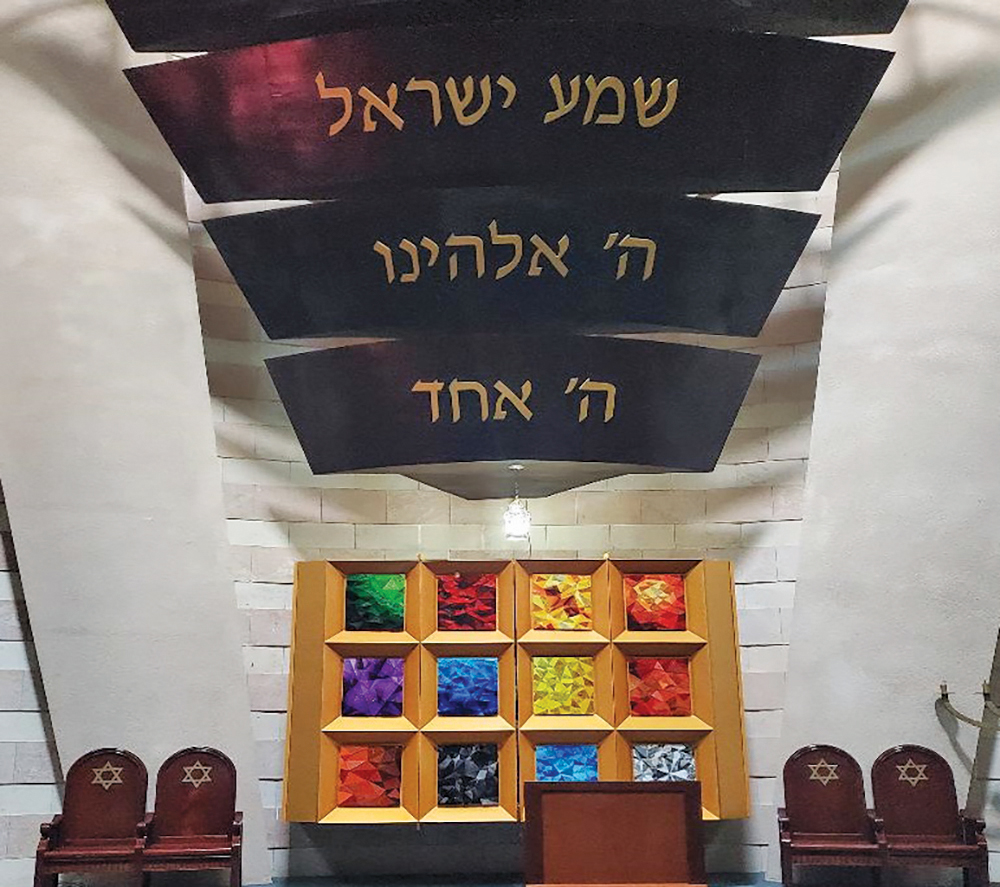
The New York Jewish Travel Guide sat down with Aaron Laine, chief rabbi of the Ashkenazi Jewish community of Panama at Beth El Synagogue, to ask a few questions about Jewish life and the community in Panama. The following interview was edited for clarity.
Thank you very much for your time, Rabbi. Could you please provide a brief introduction for yourself? How long have you been residing in Panama, and what prompted your decision to come here? In the beginning, did you encounter challenges adapting to a new environment, community and culture in Latin America?
In 1994, I made my way to Panama, where the Ashkenazi community was on the lookout for a rabbi. Raised in a Chabad household, the ethos of reaching out and assisting communities was ingrained in me. With my father having close ties to Panama, he suggested they consider hiring me, marking the beginning of my journey in 1994. Initially situated in Obarrio, the synagogue underwent a transformation about 11 years later when we acquired land in the predominantly Jewish neighborhood of Paitilla. In 2014, after meticulous planning, we established our center in Paitilla.
Back then, Paitilla housed over 65% of the Jewish population. However, a decade ago, Punta Pacifica, a new neighborhood created on a nearby landfill, attracted many Jewish residents, forming a Sephardic community. Another enclave, Bella Vista, located about a 25-minute walk away, housed a smaller Jewish population. Additionally, Marbella, a neighborhood just a 10-minute walk from our center, had a handful of Jewish residents, emphasizing the compact nature of the community.
Transitioning from America to Latin America came with its challenges, primarily due to differing cultural norms — less punctuality and a more relaxed approach. Yet what stood out was the traditional nature of the community. Even those not strictly observant participated in Friday night meals, Kiddush and Hamotzi, creating a kosher home that contrasted with the more secular American society. This stark difference in tradition and warmth became something we deeply appreciated from the very beginning.
Is there another synagogue in Punta Pacifica? Can you share information about the age groups and demographics that constitute the membership of the synagogue?

In Punta Pacifica, there’s a synagogue named Bet Max Ve Sarah. The Jewish community in Panama is predominantly Sephardic (80%), with a minority being Ashkenazi (20%). Ahavat Sion and Ateret Yosef are two of the four primary synagogues that are housed in the same structure next to each other. Twenty years later, Ateret Yosef was added, using the adjacent property that had been used as a parking lot at first. The original synagogue, Shevet Ahim, is in Bella Vista, and there’s also an Ashkenazi synagogue, along with a Chabad house.
Upon my arrival 30 years ago, there were just over 100 families. Today, our community has grown to approximately 400 families. This expansion is not only due to internal factors such as marriages and childbirth but also to an influx of individuals relocating from various countries. We’ve witnessed a significant migration from Colombia, Uruguay, Argentina, particularly Venezuela and, to a lesser extent, from other Latin American countries and the United States. This diverse mix has played a crucial role in our rapid growth. Most of our members are younger, with a relatively small number of elderly individuals.
In the last 23 years, Panama City’s Jewish community has undergone a significant transformation. Initially, with a 90% adherence to kosher practices, the addition of multiple synagogues and kosher restaurants has created a secure haven for those seeking a vibrant Jewish life. I am eager to learn the stories of the key contributors and influencers who have played crucial roles in shaping this dynamic community as well as the strategic initiatives behind these transformative changes.
Rabbi Zion Levy, z”l a highly esteemed Sephardic rabbi, played a pivotal role in the evolution of the community. Sephardic Jews, known for their deep respect for rabbis, experienced a gradual shift under Rabbi Levy’s guidance. For many years, he focused on preserving tradition without actively pushing for community growth. Instead, he emphasized the importance of keeping kosher, creating a social norm where children couldn’t eat in a non-kosher household, and fostering a sense of communal adherence to tradition.
Around 30 years ago, Rabbi Levy initiated the establishment of the first kollel, a place for people to study. Concurrently, the Azrak family sponsored the Barilkas, who began teaching the community and attracted hundreds of students, both male and female. This educational initiative marked a significant turning point, as people started to study and gain a deeper understanding of Jewish observance.
While the Jewish community in Panama was traditionally observant and faithful, the introduction of formal education led to increased awareness of and adherence to Jewish practices. As individuals started studying, a ripple effect occurred, with the community collectively embracing a more observant lifestyle. The trend toward increased observance became fashionable, influencing many to adopt practices such as keeping kosher and observing Shabbat.
Rabbi Levy emerges as a central influence in this transformation, emphasizing tradition while encouraging educational initiatives. The community’s close-knit nature facilitated the spread of observant practices, turning them into a prevalent trend in the right direction.

On a personal level, active involvement with the youth, particularly through camps, contributed significantly to inspiring the younger generation. Creating more projects and activities for the youth, combined with the fact that 98% of Jewish children attend Jewish schools, played a crucial role in aligning the community toward shared goals of increased observance and cultural preservation.
Can you discuss the dynamics between the Reform and Orthodox Jewish communities in Panama City as well as the relationships between Sephardic and Ashkenazi Jews?
In Panama, the Reform Jewish community is relatively small, consisting of approximately 250 families. Interaction among Reform members primarily occurs during government events and there’s a discernible separation between the Reform and Orthodox communities. Despite the modest size, there is a conscious effort to prioritize unity within the community, recognizing its importance for a healthier social dynamic.
Interestingly, the relationship between the Sephardic and Ashkenazi communities is notably close. Members from these distinct backgrounds frequently intermarry, creating strong familial and communal ties. In addition, the connection is symbolic but it has strong financial support. Both the Sephardic and Ashkenazi communities have contributed millions of dollars toward a shared synagogue, underscoring the depth of their collaborative and harmonious relationship. This financial collaboration serves as a tangible expression of the unity and mutual respect that characterize the broader Jewish community in Panama City.
What are the challenges and opportunities for the Jewish community in Panama City? How has the presence of antisemitism evolved, especially after the Israel-Hamas conflict? Additionally, what measures or programs are in place to address antisemitism and promote tolerance within the Jewish community in Panama?
Living as a Jew in Panama is a beautiful experience. The country embraces religious tolerance, fostering positive relationships with the government. Currently, the atmosphere is favorable and harmonious.
Is there an educational program for both children and adults affiliated with the synagogue?
Our synagogue provides diverse programs for children. We also host a school called Torah Or, which operates independently by renting space within our premises. Most children attend one of the five community schools: Magen David, Instituto Albert Einstein, Hebrew Academy, Magen David Academy, and the more religious Talmud Torah. For girls, there is Bnos Yaakov. A recent addition is Torah Or, a religious school catering to some of the boys in the community and the Reform school Isaac Rabin.
Is there a provision for Passover or Shabbat dinners at this location? Additionally, are there any social services available for the elderly?
We host Shabbat lunches but Passover dinners aren’t part of our offerings as it is commonly observed in homes in Panama. Initially, we tried organizing them, but it wasn’t successful. For those seeking a Friday dinner experience, many tourists head to Chabad House for Shabbat dinner. Within our synagogue, the independent group Beth Simha runs a daily program for senior citizens.
Can you provide insights into the challenge of limited conversions to Judaism in Latin America, attributed to the absence of a local beit din and the practice where the rabbinate doesn’t conduct conversions? Instead, candidates are prepared locally and then recommended to the Israeli rabbinate for the conversion process. How does the Jewish community traditionally welcome and support new converts? Often, communities emphasize inclusivity, extending the same respect and consideration to converts as to those born into the faith.
Our involvement in the conversion process is limited, particularly in a community that is predominantly Sephardic. The community tends to be cautious about accepting conversions and seeking sincere commitment to religion due to past experiences where some individuals showed interest primarily for personal reasons, such as marriage.

Given the community’s strict stance, I am unable to assist with local conversions. However, for individuals genuinely committed to their religious journey, especially those considering a move to Israel, I am open to offering support. My aim is to help individuals navigate their path with consideration for the community dynamics and potential challenges they may encounter. It’s worth noting that many places in Latin America, like Mexico or Argentina, generally do not engage in conversion practices at all.
An initiative among Panamanian Jews focuses on aiding the Jewish community in Cuba through endeavors like supplying kosher food for holidays, helping the elderly, and arranging bar and bat mitzvah celebrations. Can you provide additional details on the support given to Cuba and identify the individuals or groups actively involved in this initiative? Additionally, has the Jewish community in Panama produced its own rabbi?
Certainly, there are private organizations that have maintained business relations with Cuba over the years, and recently they established a distinct organization for this purpose.
Regarding the production of rabbis within the Jewish community in Panama, there is a kollel where individuals are being prepared for rabbinical roles. Notably, they have already produced their own rabbis and educators, including Rabbi Abbo from Ahavat Zion, Rabbi Btesh, who is becoming a principal at one of the schools, and Rabbi Bassan, associated with a different school.
In addition to the rabbinical program, there is a women’s seminary named Midrash Horev, which is focused on training female teachers. Each synagogue has its own women’s auxiliary and there is a robust Women’s International Zionist Organization (WIZO) organization emphasizing support for Israel.
How many individuals are currently part of the synagogue’s membership? What is the fee for membership and are there varying levels of membership available? Additionally, does the synagogue offer burial services and if so, is there an extra charge associated with this service?
Certainly. The membership options range from $400-$3,600, catering to different levels. Currently, there are approximately 400 members and some of them reside outside the local area. Membership in the synagogue is a prerequisite for enrolling children in the Jewish school. This policy applies even if one does not actively participate in synagogue activities, as it is necessary to be on the synagogue lists to access school enrollment. Additionally, burial plots incur a separate cost, and there are distinct cemeteries for Ashkenazi and Sephardic traditions.
Transitioning to holiday celebrations, could you provide insights into how major Jewish holidays, particularly Chanukah, are celebrated here? Are there outdoor Chanukah events that congregants attend? Additionally, how are festivities observed for Purim and Simchat Torah? Is there a tradition of closing the street for dancing during these celebrations?
It seems that in this community, while the Chabad House celebrates Chanukah publicly, the synagogue opts for internal celebrations. This distinction highlights the diversity of how different institutions within the community choose to observe and share the holiday festivities. It’s not uncommon for various Jewish organizations and congregations to tailor their holiday celebrations based on their unique preferences and traditions. This diversity adds to the richness of the overall Jewish cultural tapestry within the community.
What is the current demographic trend of the Jewish population in Panama? Is it experiencing growth, decline or remaining stable? Are there indications of Jewish individuals in Panama migrating to Israel, or is there a preference to remain in the country? Additionally, do you have an estimate for the approximate size of the Jewish population in Panama?
Since COVID, it has stopped growing and before COVID there was a constant increase from all over the world. Since COVID, the economy has slowed down. So one of the advantages Panama has over Latin America is that the economy is growing and more people are coming. COVID-affected, you had a small percent of people that went back to Israel. So it affected me a little bit but not significantly. We had at least 10 families or 20 families that moved after COVID. But overall, that’s stable. The Jewish population in Panama is about 15,000.
How does the Panama community observe Holocaust Remembrance Day (Yom HaShoah)? Are there particular events or educational initiatives dedicated to commemorating and honoring the memory of the Holocaust within the community?
Certainly. The Yad of Hashem program has been introduced in our community and is incorporated into the curriculum of the schools. Students take an active part in the March of the Living; every year, about 100 kids join together with an important number of adults. Holocaust education extends to local public schools, where the curriculum includes these crucial lessons. Moreover, our commitment to the youth’s engagement in Jewish culture and values is evident in the annual participation of around 20 kids in the International CTeen Shabbaton, a weekend retreat for Jewish teens from around the world.
Do you engage in fundraising activities to support both the school and the synagogue? Additionally, are there any nursing homes in the community, and is there a bikur cholim organization that provides support for the sick and those in need of care?
Although I focus only on raising funds for families in need through a dedicated account, the board is primarily in charge of the synagogue’s fundraising. The community at large has demonstrated considerable success in fundraising efforts to support individuals facing various challenges. Noteworthy organizations like Mattan Baseter address a wide range of needs such as food, rent and school expenses. Another organization, Tzedakah Umarpe, specializes in addressing medical necessities as well as mental and physical health. Our synagogue also contributes to these causes through a dedicated fund, reflecting a comprehensive and community-driven approach.
While there isn’t currently a nursing home, an ongoing project is in its final stages to establish facilities for senior citizens. This project includes individual rooms and daily activities with a separate building designated for these events. Sharei Chesed also arranges bikur cholim services for hospital visits.
To plan a kosher trip to Panama, contact the Panama Yeshiva Week and GOBEYOND at www.gobeyond.pa/en or visit panamayeshivaweek.com/book@panamayeshivaweek.com.
To reserve a seat for Shabbat lunch, contact Beth El Synagogue by emailing secretaria@centrobethel.com.
To make a hotel reservation, go to Sortis Hotel, Spa & Casino, Autograph Collection at www.marriott.com/en-us/hotels/ptyak-sortis-hotel-spa-and-casino-autograph-collection/overview or email at reservaciones@sortishotel.com.









